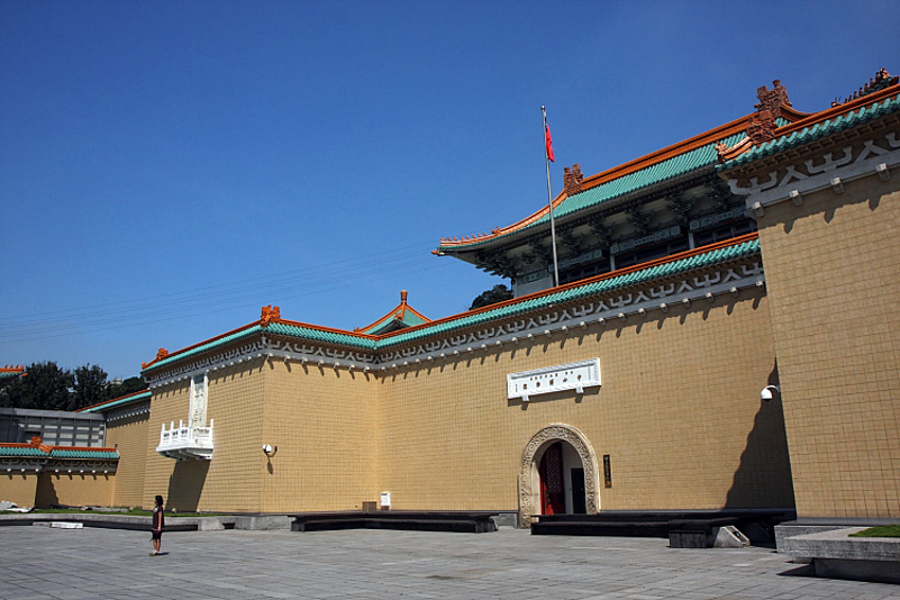by Brian Hioe
語言:
English
Photo Credit: Latinboy/WikiCommons/CC BY-SA 3.0
A POLITICAL CONTROVERSY late last month centered around the breaking of three priceless artifacts displayed at the National Palace Museum. Some estimates place the value of the three artifacts at 77 million USD, though they have never been displayed, seeing as the National Palace Museum rotates its collection and does not display all of its artifacts at once.
The National Palace Museum contains the treasures of the Forbidden City in China. The KMT brought these artifacts to Taiwan following its defeat to the CCP in the course of the Chinese Civil War. The three artifacts that broke were two bowls and a plate.
In particular, attacks by the pan-Blue camp have centered on National Palace Museum director Wu Mi-cha, who has held the post since 2019. Allegations by the pan-Blue camp are that Wu should step down for having allowed the breaking of the artifacts to occur under his watch, as well as that Wu attempted to cover up the incident. Namely, of the three artifacts that broke, this was discovered on February 3, 2021, April 7, 2022, and May 19th, 2022, but this did not come to light until recently.
 The National Palace Museum. Photo credit: Peter Bronski/Public Domain
The National Palace Museum. Photo credit: Peter Bronski/Public Domain
Other allegations against Wu claim cronyism on his part. The pan-Blue camp begrudges Wu because, despite serving as the director of the National Palace Museum, as head of Academia Historica, director of the National Museum of Taiwan History, and a number of high-profile posts, he has a clear pan-Green political leaning. Wu served as vice minister of culture under Chen Shui-bian and took political stances supportive of the Sunflower Movement and high school students that occupied the Ministry of Culture in summer 2015 to protest textbook changes pushed for by the KMT.
Indeed, through this, one can see how even random accidents become sharply politicized in Taiwan, and used as fodder for attacks between the pan-Green and pan-Blue camps. This is all the more case ahead of election season later this month.
For the pan-Blue camp, the National Palace Museum is a sore spot, because it is a symbol of the KMT’s claims that Taiwan and the ROC inherit and safeguard China’s cultural legacy. The KMT also frames the DPP as ideologically bent on realizing independence, brainwashing Taiwan’s youth with its efforts at fomenting “cultural Taiwanese independence” and eradicating traces of China through the drive towards “desinicization.”
In the past, the KMT had come under fire for claiming that the National Palace Museum could be considered a “party asset”, seeing as it brought its collection to Taiwan. This was criticized as an authoritarian viewpoint, seeing as it framed the KMT as synonymous with the state, calling to mind the KMT party-state that existed during authoritarian times.
On the other hand, members of the pan-Green camp that do not view Taiwan as having ever been part of China have suggested returning the collection of the National Palace Museum to China, perhaps in return for concessions at leaving Taiwan alone.
 Southern Branch of the National Palace Museum. Photo credit: Shouji Hasegawa/CC0
Southern Branch of the National Palace Museum. Photo credit: Shouji Hasegawa/CC0
Under its tenure, the Tsai administration has sought to pivot away from the Sinocentrism of the National Palace Museum. The Southern Branch of the National Palace Museum is intended to highlight an alternative view of Taiwan and China that does not simply frame Taiwan as a peripheral yet somehow integral part of China.
But one, in fact, saw similar controversies when the KMT last held power during the Ma administration except in reverse. Weng Chih-tsung was criticized for his appointment as director of the National Museum of Taiwan Literature in Tainan under Ma in 2014, with the view that Weng is not an expert in Taiwan literature, and that the appointment was political in nature. This is perhaps not so different from how Wu is an expert in Taiwanese history, but appointed director of the National Palace Museum.
This points to how the cultural field, as well as the academic field in Taiwan, is sharply polarized between the pan-Green and pan-Blue camps. Academic departments of Taiwanese literature or history, for example, are usually pan-Green, while those of Chinese literature and history are usually pan-Blue. Both camps largely view themselves as at war with each, whether in terms of academia or cultural production. This is more broadly reflective of stark political divisions in Taiwanese society.

